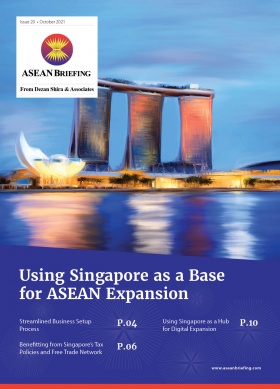How to Register a Trust in Cambodia?
Cambodia’s Prakas 003 sets out the establishment, function, and registration requirements of trusts in the country.
Under the Prakas, a trustee can be registered as a legal entity or an individual person. The registration process is done through the Non-Banking Financial Services Authority (NBFSA). Apart from public trusts and social trusts, a trust can be established for a non-specified period. However, the term is not to exceed more than 100 years from the date of establishment.
In January 2022, the Non-Banking Financial Services Authority (NBFSA) of Cambodia issued Prakas 003 on the establishment, function, and management of trusts in the country. The Prakas is an implementing regulation to Cambodia’s first-ever Law on Trusts issued in 2019.
Prakas 3 sets out the rules, procedures, and conditions for the establishment of trusts, the registration requirements, and the licensing approvals that are granted to trustees.
Under the Prakas, a trust operation is any activity pertaining to the transfer of property from its owner (the trustor) to an entity or person to control, manage, and maintain for the benefit of another person or entity (the beneficiary).
How do you register a trust in Cambodia?
Trustee companies and individual trustees
Under the Prakas, a trustee can be a legal entity (trustee company) or an individual person (individual trustee).
Individual trustees can be licensed as (i) independent individual trustees; or (ii) individual trustees of a trustee company. The difference between the two can be found in Articles 23 and 27 of the Prakas.
Formation of the trust
A trust can have more than one trustee; however, if more than one trustee is appointed then the number of trustees must be an odd number. Once the trust is registered with the NBFSA, the trustor can begin the transfer of funds to the trust account. The trustee must commence operations no later than three months after obtaining the license/approval.
The NBFSA must be notified if there are any changes to the trustees, and each change must also be registered with the NBFSA. Further, the beneficiary has a period of 30 days to file any objections to the change of trustees.
Apart from public trusts and social trusts, a trust can be established for a non-specified period. However, the term is not to exceed more than 100 years from the date of establishment.
Responsibilities of the trustee
The trustee has several responsibilities:
- The trustee must have a conflict-of-interest policy and separation of assets;
- The trustee must observe the compliance obligations that are provided in the Prakas;
- A trustee must comply with both financial and non-financial requirements;
- The trustee must comply with the best governing practices such as transparency, accountability, and efficiency that protect the interests of the trustor and beneficiary; and
- The trustee must maintain records of trustee accounts and trust accounts for a period of 10 years.
Management of the trust
The management of the trust assets is to be done in accordance with the trust agreement and any relevant regulations. The assets under the management of the trust are not to be used for the discharge of liabilities or debts of trustees for the purpose of voluntary liquidation or bankruptcy.
Termination of the trust
A trust can be terminated in any of the following events:
- Through a court judgment;
- By a unanimous decision made by the trustors;
- The term of the trust has expired; or
- The trust objective has been fulfilled.
The trustee needs to notify the NBFSA at least 30 days before the termination date and the clearance process must be in-line set out by the NBFSA. After the trust has been terminated, the trustee must transfer all the remaining trust funds based on the conditions that were previously determined by the trust.
If the trust does not specifically state who is entitled to the funds, then the funds are to be transferred equally to any living beneficiaries.
Further Reading
- The Cambodia-South Korea Free Trade Agreement: Increasing Potential for Downstream Sectors
- Cambodia’s First Law on Competition: What Investors Need to Know
- Cambodia Makes Amendments to the Labor Law
About Us
ASEAN Briefing is produced by Dezan Shira & Associates. The firm assists foreign investors throughout Asia and maintains offices throughout ASEAN, including in Singapore, Hanoi, Ho Chi Minh City, and Da Nang in Vietnam, Munich, and Essen in Germany, Boston, and Salt Lake City in the United States, Milan, Conegliano, and Udine in Italy, in addition to Jakarta, and Batam in Indonesia. We also have partner firms in Malaysia, Bangladesh, the Philippines, and Thailand as well as our practices in China and India. Please contact us at asia@dezshira.com or visit our website at www.dezshira.com.








